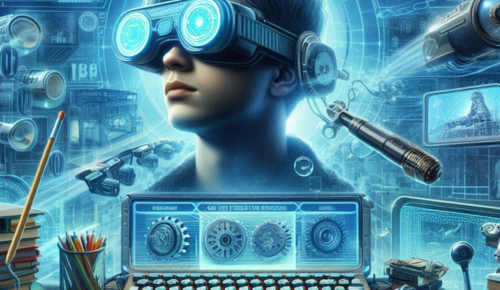Technology has the potential to revolutionise the lives of individuals with disabilities, and the blind community is experiencing the benefits of innovation like never before. The development of new tech and resources for the blind has opened up unprecedented opportunities for independence, mobility, and access to information. From artificial intelligence (AI) to smart devices and adaptive tools, these advancements are transforming the way blind individuals interact with the world. This article delves into the future of resources for the blind, focusing on the game-changing tech and tools that are reshaping their daily lives.
1. Artificial Intelligence and Machine Learning: Revolutionising Accessibility
Artificial Intelligence (AI) and Machine Learning (ML) are paving the way for new, adaptive technologies that cater specifically to the needs of blind users. One of the most promising advancements is AI-powered screen readers. These tools, such as JAWS (Job Access With Speech) and NVDA (NonVisual Desktop Access), help blind individuals navigate digital platforms by reading out on-screen text. But with the integration of AI, these tools are becoming smarter and more intuitive, offering context-aware feedback and allowing users to interact with content in new and meaningful ways.
Furthermore, AI-based applications like Be My Eyes connect blind individuals to sighted volunteers through a live video feed, offering assistance in real-time for various tasks such as reading labels, identifying objects, or navigating unfamiliar spaces. As AI continues to evolve, these tools will become increasingly accurate, enabling smoother interactions between blind individuals and their environments.
2. Wearable Technology: Enhancing Mobility and Independence
Wearable technology has made tremendous strides in improving the mobility of blind individuals. The development of smart glasses and wearable navigation systems is helping users navigate their surroundings with greater ease and confidence. For example, OrCam MyEye, a smart camera that attaches to glasses, uses AI to read texts, recognize faces, and identify products and objects in the environment. This technology offers a significant level of independence, allowing users to engage in activities such as shopping or recognizing familiar faces without requiring external assistance.
Moreover, tactile wearables, such as the Sunu Band, use vibrations to communicate environmental information to blind users. This band provides real-time feedback on obstacles, proximity to objects, and navigational cues, enabling users to move through spaces more effectively and with fewer risks.
3. Smart Home Technology: A More Accessible Living Environment
Smart home technology is another area where innovation is opening new doors for blind individuals. With the rise of voice-controlled virtual assistants like Amazon Alexa, Google Assistant, and Apple Siri, users can interact with their home environments through simple voice commands. Blind individuals can now control lighting, thermostats, security systems, and appliances without needing to rely on physical interactions with the devices.
In addition, smart appliances that integrate with these virtual assistants, such as voice-activated microwaves or smart washing machines, are making daily tasks simpler and more accessible. As smart home technology continues to advance, the degree of autonomy and independence available to blind individuals will only increase, making it easier for them to live comfortably and efficiently.
4. Navigation and Mobility Aids: Rethinking Urban Accessibility
One of the greatest challenges for blind individuals is navigating the world around them, particularly in urban environments with complex infrastructures. However, new navigation technologies are transforming how blind people get around. GPS-based apps, like Aira and NavCog, provide audio-guided navigation that helps blind users navigate public spaces, streets, and buildings.
Additionally, smart cane technology such as the WeWalk Smart Cane integrates sensors, GPS, and smartphone connectivity to give blind individuals real-time data about their surroundings. These devices can detect obstacles, offer haptic feedback, and even interact with public transit systems to make traveling in unfamiliar areas much easier.
5. Braille Innovations: Revitalising a Classic Resource
While Braille has been an essential resource for blind individuals for centuries, recent innovations are making it more versatile and accessible. Electronic Braille displays, such as the BrailleNote Touch and the Focus 40 Blue, allow blind users to read and write Braille on digital platforms. These devices use tactile screens to provide real-time feedback, which makes reading and composing text easier than ever before.
New Braille e-books and digital Braille libraries are also expanding access to literature and educational content. The integration of Braille with modern digital tools is ensuring that blind individuals can continue to interact with a world that is increasingly driven by technology.
Conclusion
The future of resources for the blind is undeniably exciting, with technology offering new avenues for independence, mobility, and connection. From AI-powered screen readers and wearable navigation devices to smart home systems and Braille innovations, the tools resources for the blind are more advanced and accessible than ever before. As these technologies continue to evolve, blind individuals will gain even more autonomy, enabling them to interact with their environment in ways that were once thought impossible. The future is bright, and with continued innovation, the world will become a more inclusive place for everyone.






